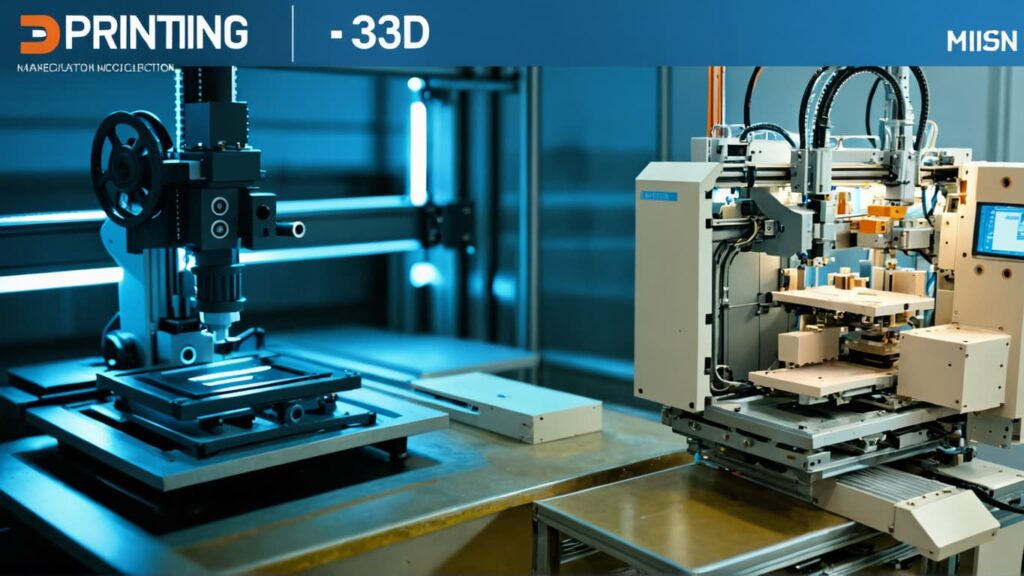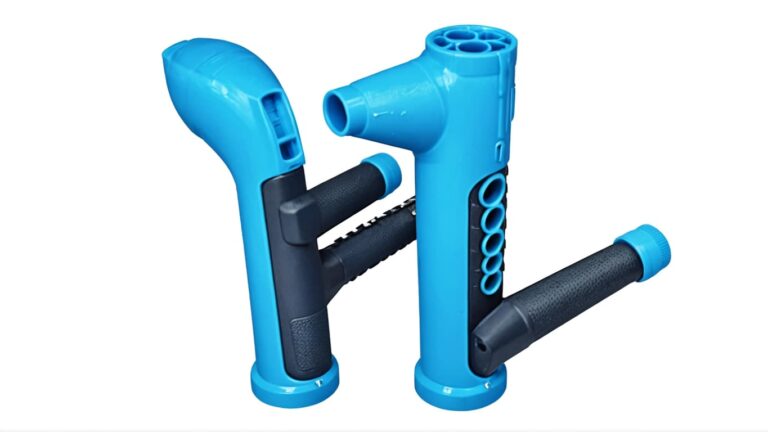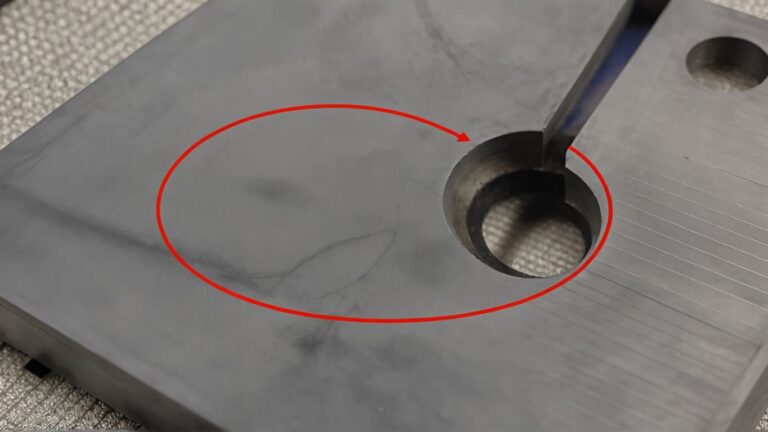Understanding Injection Molding vs. 3D Printing
What are the Key Differences Between Injection Molding and 3D Printing?
Injection molding and 3D printing are two widely used manufacturing techniques, each suited to different production needs. Injection molding is a process in which molten material, typically plastic, is injected into a mold cavity under high pressure to form a part. This method is highly efficient for mass production due to its ability to produce consistent, high-quality parts at a low per-unit cost once the mold is created. In contrast, 3D printing is an additive manufacturing technique where material is deposited layer by layer to create a part. This process allows for rapid prototyping and complex geometries that may be difficult or impossible to achieve using injection molding.
Material considerations also play a significant role in selecting between these two methods. While injection molding supports a wide range of thermoplastics such as polypropylene (PP), polyethylene (PE), and polycarbonate (PC), 3D printing materials are more limited, often focusing on ABS, PLA, and specialized polymers like nylon or TPU. It is important to note that even when the same material name is used (e.g., ABS), the formulation for 3D printing differs from that used in injection molding, which can lead to variations in mechanical properties and durability.
From a production standpoint, injection molding is best suited for large-scale manufacturing, typically for quantities above 500 units, due to the high initial cost of mold fabrication. On the other hand, 3D printing is ideal for low-volume production or prototyping, allowing for functional validation and market testing before committing to large-scale manufacturing. Therefore, businesses must weigh their production needs carefully when choosing between these two techniques.
When Should I Use Injection Molding vs. 3D Printing for Production?
The choice between injection molding and 3D printing depends on several factors, including production volume, cost constraints, material requirements, and design complexity. Injection molding is the preferred choice when high-volume production is needed because, after the initial mold investment, the per-unit cost is significantly lower compared to 3D printing. Additionally, injection molding provides superior material strength, surface finish, and repeatability.
Conversely, 3D printing is optimal for rapid prototyping, custom parts, and small-batch production. Since no molds are required, design iterations can be made quickly and cost-effectively. This is particularly beneficial in the early stages of product development when testing and refining a design are crucial. However, 3D printing’s limitations in material selection and production speed make it less suitable for large-scale manufacturing.
Case studies illustrate these principles well. For example, in the automotive industry, injection molding is used to mass-produce durable plastic components such as dashboards and housings, where consistency and mechanical strength are critical. Meanwhile, companies like GE use 3D printing to develop complex aerospace components, allowing for lightweight structures with optimized performance that would be challenging to produce using traditional molding techniques.
Advantages and Disadvantages of Injection Molding and 3D Printing
Both injection molding and 3D printing have their own sets of advantages and disadvantages, making them suitable for different applications.
| Factor | Injection Molding | 3D Printing |
|---|---|---|
| Cost | High initial mold cost, but low per-unit cost for mass production | Low initial investment, but higher per-unit cost for larger quantities |
| Production Speed | Fast for high-volume production | Slower per part, but quick for prototyping |
| Material Selection | Wide range of thermoplastics, composites, and elastomers | Limited material choices, often different from injection-molded equivalents |
| Design Complexity | Limited by mold constraints (e.g., undercuts, draft angles) | Supports complex geometries without tooling limitations |
| Scalability | Highly scalable for mass production | Best for low-volume, customized parts |
While injection molding excels in cost efficiency and production speed for mass manufacturing, it comes with challenges such as high upfront mold costs and longer setup times. On the other hand, 3D printing offers flexibility and quick design iterations but struggles with material limitations and higher per-unit costs.
Ultimately, manufacturers should consider their specific project requirements, including production volume, material properties, and budget constraints, before deciding on the most appropriate manufacturing method.
Cost Analysis of Manufacturing Methods
How do the Costs of Injection Molding and 3D Printing Compare?
Injection molding and 3D printing have distinct cost structures, making them suitable for different production scales. Injection molding involves significant upfront costs due to mold fabrication, which can range from $5,000 to $100,000, depending on complexity and material. However, once the mold is created, the per-unit cost decreases significantly, often reaching as low as $1 per part for high production volumes. In contrast, 3D printing has minimal setup costs but higher per-unit costs, typically ranging from $5 to $50 per part, making it more cost-effective for prototyping or low-volume production.
Several factors impact overall production costs, including material expenses, labor, machine operation time, and post-processing requirements. Injection molding benefits from economies of scale—higher production quantities reduce the cost per unit. Conversely, 3D printing is advantageous for customization and low-volume production but becomes cost-prohibitive at large scales due to slower print times and higher material costs.
From a long-term perspective, businesses must consider production volume to determine cost-effectiveness. Studies indicate that injection molding becomes more economical than 3D printing when production exceeds 500 to 1,000 units, depending on part complexity and material selection. This makes 3D printing ideal for functional validation and market testing before committing to mass production with injection molding.
What is the Break-Even Point for Using Injection Molding vs. 3D Printing?
The break-even point is the production volume at which the total cost of injection molding equals the total cost of 3D printing, helping manufacturers decide the optimal method. This analysis accounts for fixed costs (e.g., mold creation) and variable costs (e.g., material and processing fees).
To calculate the break-even point:
Break-even volume = (Fixed cost of injection molding) / (Cost per unit difference between 3D printing and injection molding)
For example, if an injection mold costs $20,000 and the per-unit cost difference between 3D printing and injection molding is $10, the break-even point would be:
Break-even volume = $20,000 / $10 = 2,000 units
This means that for production volumes below 2,000 units, 3D printing is more cost-effective, whereas for higher volumes, injection molding offers better cost savings.
Real-world examples indicate that industries such as automotive and consumer electronics often switch to injection molding after initial prototyping with 3D printing, ensuring cost efficiency for mass production. By performing a break-even analysis early, manufacturers can optimize investment decisions and avoid unnecessary expenses.
How to Reduce Costs in Injection Molding?
Reducing injection molding costs requires a combination of strategic planning, material selection, and process optimization. Several cost-saving strategies include:
- Design Optimization – Simplifying part geometry reduces mold complexity and machining time, leading to lower tooling costs.
- Multi-cavity Molds – Using multi-cavity molds increases production efficiency, reducing per-unit costs.
- Efficient Material Selection – Choosing cost-effective materials with minimal waste can significantly lower expenses. For example, using recycled plastics instead of virgin materials can cut costs by up to 30%.
- Minimizing Mold Modifications – Avoiding unnecessary design changes after mold fabrication prevents additional expenses.
- Production Efficiency Improvements – Utilizing automation and process monitoring helps reduce material waste and energy consumption.
A study by the Plastics Industry Association found that optimizing mold design and using high-efficiency machines can reduce injection molding costs by 15-25%. By implementing these techniques, manufacturers can maximize their cost savings while maintaining product quality.
Design Considerations for Manufacturing Processes
What Considerations are Needed for Designing Parts for Injection Molding?
Designing parts for injection molding requires careful planning to ensure manufacturability and cost efficiency. Key design requirements include uniform wall thickness to prevent warping, appropriate draft angles for easy part ejection, and rib reinforcements to enhance structural integrity without increasing material usage. According to a study published by the Society of Plastics Engineers, maintaining a consistent wall thickness within ±10% of the nominal value significantly reduces defects such as sink marks and voids.
Common pitfalls to avoid include sharp corners, which can lead to stress concentration and cracking, and inadequate gating or venting, which may cause short shots or air traps. Many manufacturers recommend using rounded fillets at corners and strategically placing gates to facilitate smooth material flow.
Best practices for ensuring manufacturability involve early-stage design validation through mold flow analysis and prototyping. Utilizing simulation tools like Autodesk Moldflow or SolidWorks Plastics can help designers detect potential issues before committing to expensive mold fabrication. By integrating these considerations from the beginning, manufacturers can minimize production defects and reduce time-to-market.
How Does 3D Printing Impact Custom Plastic Part Design?
3D printing offers unparalleled design flexibility, allowing for intricate geometries that would be impossible or cost-prohibitive with traditional manufacturing. Unlike injection molding, which requires designing around mold constraints, 3D printing enables the creation of complex lattice structures, internal channels, and organic shapes. A report by Wohlers Associates reveals that additive manufacturing has led to a 30% reduction in material waste compared to subtractive methods.
Innovations enabled by additive manufacturing techniques include multi-material printing, embedded electronics, and bio-inspired structures. Companies like General Electric and Airbus have leveraged 3D printing to produce lightweight aerospace components with reduced material consumption, leading to significant cost savings.
Real-world examples showcase how industries have benefited from custom 3D-printed parts. For instance, medical implants tailored to patient-specific anatomies, such as dental crowns and orthopedic prosthetics, are now routinely produced using biocompatible 3D printing materials. Additionally, automotive manufacturers use 3D-printed jigs and fixtures to streamline assembly processes, reducing downtime and improving production efficiency.
Design Complexity in Manufacturing Processes
The level of design complexity plays a crucial role in selecting the appropriate manufacturing method. Injection molding is ideal for high-volume production of relatively simple shapes, whereas 3D printing excels in creating intricate, low-volume custom parts. A comparative study by MIT found that for production runs exceeding 500 units, injection molding becomes more cost-effective due to economies of scale, while 3D printing remains preferable for prototyping and small-batch manufacturing.
Evaluating the impact of design on production efficiency involves balancing aesthetics, functionality, and manufacturability. Overly complex designs may require additional processing steps, increasing costs and lead times. By employing design-for-manufacturing (DFM) principles, engineers can simplify geometries while maintaining performance requirements.
Various tools and software, such as generative design and topology optimization, assist in creating optimized designs. Programs like Autodesk Fusion 360 and Siemens NX use AI-driven algorithms to suggest lightweight yet structurally sound geometries, reducing material usage and enhancing performance. By leveraging these technologies, manufacturers can achieve a competitive edge in both cost and innovation.
Applications of Manufacturing Technologies
What are the Applications of Injection Molding and 3D Printing?
Injection molding and 3D printing are widely used across various industries, each serving different purposes based on production needs and material constraints. Injection molding is predominant in industries such as automotive, consumer electronics, healthcare, and packaging, where large-scale production and material consistency are crucial. 3D printing, on the other hand, plays a significant role in prototyping, aerospace, medical implants, and customized manufacturing due to its ability to produce complex geometries and rapid iterations.
Examples of Products Manufactured:
- Injection Molding: Plastic housings for electronics, automotive interior components, medical device casings, bottle caps, and packaging containers.
- 3D Printing: Custom prosthetics, aerospace components, architectural models, and low-volume specialized tools.
Future trends indicate a growing integration of both technologies, with hybrid manufacturing becoming more prevalent. According to a 2023 report by SmarTech Analysis, the 3D printing materials market is expected to reach $19 billion by 2030, highlighting its increasing adoption in end-use production rather than just prototyping.
How to Choose Between Injection Molding and 3D Printing for Your Project?
Selecting the right manufacturing technology depends on several factors, including volume, design complexity, material properties, and cost constraints.
Guidelines for Decision-Making:
- Production Volume: If the requirement exceeds 500 units, injection molding is more cost-effective due to economies of scale.
- Design Complexity: 3D printing allows for intricate geometries that would be difficult or impossible to achieve with injection molding.
- Lead Time: 3D printing offers faster turnaround for prototypes, whereas injection molding requires mold fabrication, which can take weeks.
To facilitate decision-making, companies often use manufacturing cost calculators and DFM (Design for Manufacturability) guidelines to assess feasibility. A 2022 study by Wohlers Associates found that 60% of manufacturers use 3D printing for functional prototyping before transitioning to injection molding, underscoring the complementary nature of both methods.
Factors to Consider When Choosing Manufacturing Technology
When evaluating manufacturing technologies, businesses must align their choices with market demands, production scalability, and overall business strategy.
Key Metrics for Evaluation:
| Factor | Injection Molding | 3D Printing |
|---|---|---|
| Initial Investment | High (mold cost) | Low (no mold required) |
| Per-Unit Cost | Low (for high-volume production) | High (for low-volume production) |
| Lead Time | Longer (mold fabrication required) | Shorter (direct digital production) |
| Material Selection | Wide range of industrial-grade materials | Limited to available 3D printing materials |
Understanding market trends is crucial. For example, in the medical industry, where customization is key, 3D printing is widely adopted for creating patient-specific implants. Meanwhile, industries requiring mass production, such as consumer goods, rely heavily on injection molding.
Ultimately, successful manufacturing strategies incorporate both technologies at different stages of production. Companies that strategically utilize 3D printing for validation and injection molding for scaling can reduce risks and optimize costs, ensuring a competitive edge in the evolving manufacturing landscape.
Turnaround Times for Production
Expected Turnaround Times for Injection Molding vs. 3D Printing
When comparing turnaround times for injection molding and 3D printing, significant differences emerge. Injection molding typically requires a longer initial setup time due to the need for mold fabrication, which can take anywhere from a few weeks to several months depending on complexity. However, once the mold is ready, production is extremely fast, with cycle times ranging from a few seconds to a couple of minutes per part. In contrast, 3D printing eliminates the mold-making phase, allowing for rapid production of prototypes or small batches, often within hours or days.
Several factors affect turnaround times in production, including material availability, design complexity, post-processing requirements, and order volume. Injection molding benefits from economies of scale but suffers from extended lead times for tooling. Meanwhile, 3D printing is more agile for low-volume production but may become inefficient for large-scale manufacturing due to slower per-unit production speeds.
To improve efficiency and speed in manufacturing, companies can adopt hybrid strategies such as using 3D printing for rapid prototyping and initial market testing before transitioning to injection molding for full-scale production. Additionally, advancements in digital manufacturing, such as AI-driven design optimization and on-demand production networks, can further enhance turnaround times.
How Production Volume Affects the Choice Between 3D Printing and Injection Molding?
Production volume plays a crucial role in determining the optimal manufacturing method. Generally, 3D printing is best suited for low-volume production (1–500 units), while injection molding becomes more cost-effective for high-volume production (500+ units). The reason lies in the high upfront tooling costs of injection molding, which are justified only when amortized over large production runs.
From a cost perspective, 3D printing eliminates tooling expenses, making it ideal for prototyping and small-scale production. However, per-unit costs remain relatively high compared to injection molding. According to a study by Wohlers Associates, the average cost per unit for 3D printing is 50–100 times higher than for injection molding when scaling to mass production.
Project timelines also shift based on production volume. For instance, a company developing a new consumer product may use 3D printing for the first 100 units to test market response. If demand grows, switching to injection molding ensures faster production and lower costs per unit. This phased approach minimizes financial risk while optimizing speed and efficiency.
Understanding Manufacturing Processes
Injection molding and 3D printing operate on fundamentally different principles. Injection molding involves melting plastic pellets and injecting them into a metal mold under high pressure. Once cooled, the part is ejected, and the cycle repeats. This process is highly efficient for mass production, offering consistent quality and a wide range of material options.
On the other hand, 3D printing builds objects layer by layer using various techniques such as FDM (Fused Deposition Modeling), SLA (Stereolithography), or SLS (Selective Laser Sintering). Each method has unique advantages: FDM is cost-effective for prototyping, SLA provides high-detail surface finishes, and SLS enables complex geometries without support structures.
For those looking to deepen their understanding of modern manufacturing, resources such as the “Manufacturing Guide” by MIT and online platforms like Coursera and Udemy offer valuable courses on both techniques. Additionally, advancements in smart manufacturing, including AI-driven design optimization and real-time production monitoring, are shaping the future of manufacturing by enhancing precision and reducing waste.



